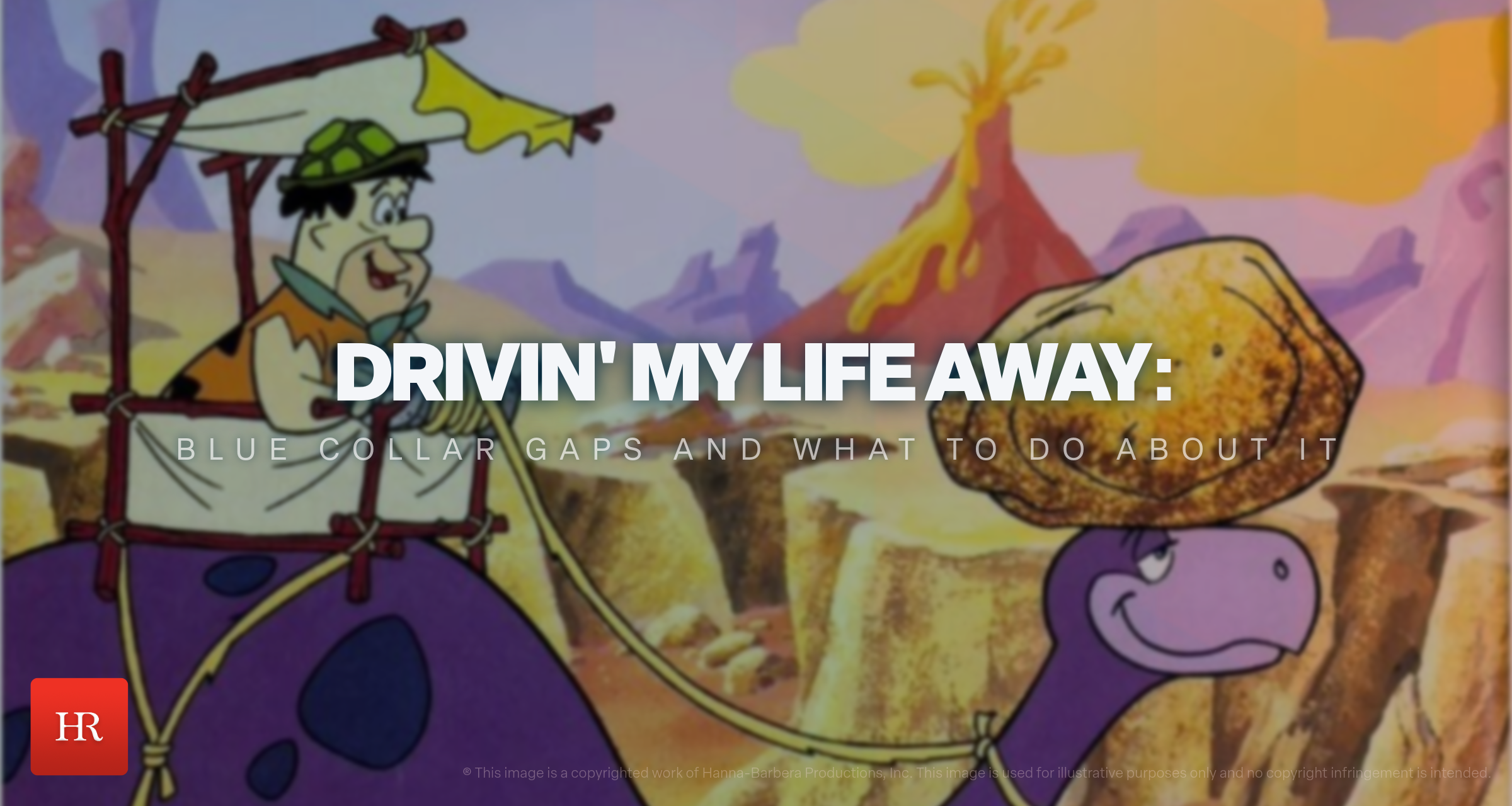I had the pleasure of attending WorkHuman Live, once again, this past week. One of the things I...
Drivin' My Life Away: Blue-Collar Gaps and What to Do About It

I was a little kid when I learned what a quarry was. Growing up in Philadelphia, there were not quarries aplenty. There were construction vehicles - cranes, bulldozers, excavators - as the city, like many other metropolitan areas, was consistently under construction. Roadways, office buildings, and residential areas were popping up or being redone. The rock quarry - where the raw material of rocks, sand, gravel, and more - used to provide much of the construction material was an unknown to me. And then I met someone…Fred Flintstone.
Fred worked at Slate Rock and Gravel Company. He was a bronto-crane operator. Fred was a skilled professional in that blue-collar work and was a consistent presence at the job site. I got to learn bits about quarries through my interactions with Fred. I got to see Fred most days after school when he appeared on my television set.
I knew about blue-collar jobs as I grew up in a world of food service, home remodeling, building maintenance, delivery drivers and more. We lived in a hand-to-mouth environment and did not know any differently. And back then, there was an expectation that the next generation of workers would find their greatest success through an educational path; in other words, by going to college, their futures would be more secure and more opportunistic.
For a while, that was true. Colleges were brimming with eager students experiencing learning opportunities in the classroom and in co-ops or internships (there was also learning happening in the social activities, but that’s another blog…). Bright-eyed students transitioned into the corporate world rapidly with many campus job fairs scooping them up before graduation.
There has been a cost to that, however. We have about a 1.6 to 1.9 million worker shortfall in US manufacturing, based on some varying research. We have not encouraged the breadth of blue-collar work, which also includes carpentry, distribution, plumbing, food service, electrical, and more. Our experience of going to college being the answer has left us with gaps that require intentional effort to remedy. Yes, the trades are a gap.
What are the remedies? That’s where we are now. Who will drive the big rigs for a living? Who is going to work the line? Who is going to run the plumbing in our new construction home?
Maybe one place to start is to open up those job fairs to high school students. Let’s get both the degree required roles AND the trade school/apprenticeship roles promoted equally. Give fair space to all so that it’s understood that the opportunities are equal. The work may differ, but so do the people. If we highlight the options, diversity of interest can flourish.
Provide realistic job previews. Remember those? Give candidates a chance to see the work up close and personal. The exposure will drive interest. People will talk about what they’ve experienced with others. Even if someone does not take a role, the referral process will improve for those blue-collar roles, as that person is likely to share the experience with another.
Appreciate that different people like different work. That’s it. You may not like driving tractor-trailers, but there are individuals who do. Obvious? Yes, but the interest in the promotion of opportunities is influenced by alignment and interest. Psychologically, we will gravitate toward what we know. It is a matter of will to ensure the equitable encouragement of all work options.
I didn’t grow up to work in a rock quarry, but I thought about it! Without being exposed to Fred and his work, I may never have known about this career. What it also did was grow an appreciation in me for all work. I know that my career in HR was influenced by such exposure. So, join me in helping the next generation be equitably aware of all types of work to be done! Yabba Dabba Do (IFYKYK).

.png?height=200&name=Humareso%20Blog%20Posts-19-Wedding%20Bell%20Blues%20(1).png)

Blog comments